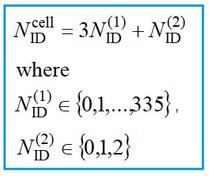5G NR Physical Layer Failures: Root Causes and Solutions
Advertisement
The following are common 5G NR test cases at the physical layer, including their failures, root causes, and solutions/suggestions.
Failure Case #1: Poor Signal Quality (SINR, SNR)
Root Causes:
- Interference from neighboring cells.
- Poor antenna alignment.
- Multipath fading.
- Poor RF planning.
- Hardware issues such as defective RF components.
Solutions/Rectifications:
- Optimize RF planning and network design to reduce interference.
- Improve antenna alignment and use beamforming techniques to focus the signal.
- Implement advanced interference cancellation techniques.
- Use Massive MIMO and better power control settings.
Failure Case #2: Block Error Rate (BLER) Exceeds Threshold
Root Causes:
- Incorrect modulation and coding scheme (MCS) selection.
- High interference.
- Weak signal strength.
- Incorrect HARQ (Hybrid Automatic Repeat Request) configuration.
Solutions/Rectifications:
- Adjust Modulation and Coding Scheme (MCS) to match the channel conditions.
- Use adaptive modulation and coding (AMC) to dynamically adjust based on real-time channel quality.
- Ensure proper HARQ process configuration and increase the number of retransmissions if needed.
Failure Case #3: Synchronization Failure (Time/Frequency)
Root Causes:
- Poor cell reference signal quality.
- Doppler shift due to high-speed mobility.
- Drift in local oscillator frequency.
Solutions/Rectifications:
- Enhance the quality and strength of cell reference signals.
- Implement robust synchronization algorithms that can handle Doppler effects and high mobility.
- Use highly stable oscillators in both the UE and the gNB to reduce frequency drift.
Failure Case #4: Beam Failure Detection and Recovery
Root Causes:
- Incorrect beamforming configuration.
- Blockage or obstruction of the line of sight.
- Rapid UE (User Equipment) movement causing loss of optimal beam.
Solutions/Rectifications:
- Optimize beamforming algorithms and ensure they adapt quickly to changing UE positions.
- Implement beam management procedures, including beam refinement and switching.
- Increase the number of reference signals for better beam tracking.
Failure Case #5: Initial Access and Random Access Procedure Failures
Root Causes:
- Poor signal-to-noise ratio (SNR).
- Contention resolution failure.
- Improper Random Access Channel (RACH) configuration.
Solutions/Rectifications:
- Adjust Random Access Channel (RACH) parameters such as preamble format and power settings.
- Use contention-free Random Access procedures where applicable.
- Monitor and dynamically adjust RACH resources based on network load and UE density.
Conclusion
Understanding these PHY layer failures and their root causes is crucial for debugging and optimizing network performance. Efficiently identifying and addressing these issues ensures reliable and high-performing 5G networks.
Advertisement
 RF
RF



